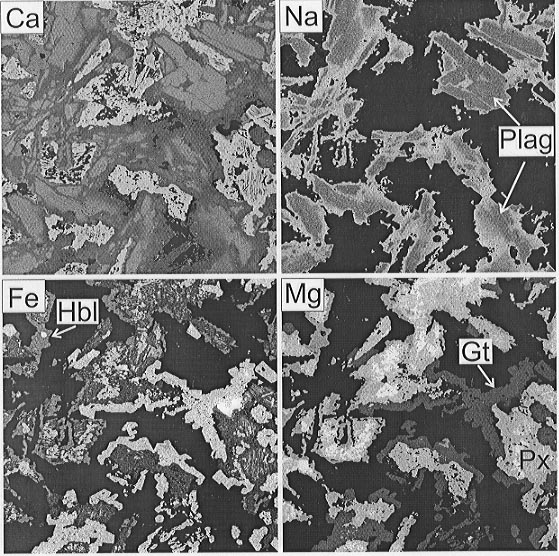

Granulite facies rocks have a special significance in metamorphic terranes. Firstly, they represent rocks transformed at the highest grades (i.e. temperatures) of regional metamorphism at the conditions where melting (magmatic) processes begin. Secondly, they are known from many places in the world to represent rocks from the lowest levels of the continental crust. Large areas of granulite, in places such as Canada and Scandinavia, have been exposed by exhumation processes that took place long after their formation and cooling. From geochronological investigation, the major granulite-forming processes are believed to have taken place in the early part of the Earth's history, in the Archaen and Proterozoic, and so granulites are often intensely studied not just because of their high-grade mineralogy but also for their geochemical characteristics that reflect fundamental crust-forming processes. A common feature of Archean and Proterozoic granulite belts is the high degree of textural and compositional equilibrium. In such rocks, mineral phases are generally homogeneous, grain boundaries commonly meet at 120° triple junctions, and isotopic dating typically reveals a long, slow cooling process. The sample described here, although also extremely old (ca. 1800 Ma) shows a surprising degree of disequilibrium and offers important pointers to the understanding of metamorphic processes in the deep crust.
The sample highlighted here comes from the Hengshan Complex of Shanxi Province, China, which forms part of the North China Craton: the largest (>1 500 000 km2) and oldest of the cratonic blocks found in China. Granulite facies mineral assemblages have been mostly replaced here by those of the amphibolite facies. Mafic lenses are abundant in some parts of the complex as strongly deformed boudins or sheets with the dominant rocks appearing as common amphibolites (hornblende+plagioclase).
A remarkable finding, in numerous mafic lenses, was the preservation of the original magmatic texture showing that before metamorphism these rocks were originally dolerites and gabbros, rocks containing the minerals plagioclase and pyroxene. Chains of garnet, a mineral documenting the granulite facies metamorphic overprint in the rock, were also visible at the boundary between the magmatic plagioclase and pyroxene domains. Characteristic textural and compositional variations in one of the corona dolerites are depicted in compositional maps for the elements Ca, Na, Fe and Mg in Figure 3.3-15. The Na and Ca maps show lath-shaped plagioclase with an obvious variation between relatively Ca-rich cores and significantly more Na-rich, sharply-bounded margins. Clinopyroxene, evidenced by high Ca and Mg along with moderate Fe, was originally a magmatic phase together with the more calcic plagioclase. However, magmatic pyroxene was more augitic in composition and metamorphism has produced a more diopside-rich clinopyroxene with the residual components now present as exsolved orthopyroxene lamellae (high Fe and Mg, low Ca) in the clinopyroxene. The most conspicuous metamorphic phase is garnet that forms chains of irregular width between plagioclase and pyroxene. The garnet contains numerous small inclusions of quartz and has thus clearly formed by the reaction: pyroxene + plagioclase = garnet + quartz. Pargasitic hornblende is also apparent in the Fe and Mg maps, forming narrow coronas around pyroxene. This implies the presence of a hydrous fluid phase during at least part of the rock's history.
This sample exhibits a typical mineral assemblage for the granulite facies of garnet + pyroxene + plagioclase + quartz, yielding metamorphic conditions of around 750°C and 8 kbar, but is quite clearly out of textural and compositional equilibrium. The feldspar, over large areas, is a relic of the magmatic history that has only reacted along its margins to yield a zone of more sodic plagioclase. Variation of Na-content towards grain boundaries is well defined in the plagioclase domains, suggesting action of a grain-boundary fluid phase during feldspar-pyroxene interaction. It is highly unlikely, however, that a pervasive grain boundary transport medium was available over long periods of time in this rock because the width of the sodic plagioclase zone differs considerably within the sample.
The problem of nucleation is also well demonstrated by garnet growth in this sample. Garnet + quartz growth, should have resulted in the instability of magmatic pyroxene and plagioclase. However, there are still pristine contacts between these minerals although a very narrow sodic plagioclase layer is now present at the contact. In addition, the thickness of the garnet corona is very irregular showing that growth was retarded to different degrees. From the presence of small Ca-rich domains within garnet, it is also clear that the garnet chains represent a series of small, individual grains amalgamated during growth and not a coherent film that grew along the contact between the magmatic phases.
 |
Fig. 3.3-15: Compositional maps for the elements Ca, Na, Fe and Mg in a coronitic metadolerite from Hengshan, N. China. Lighter grey corresponds to high concentration, darker grey to low concentration. Gt=garnet, Hbl=hornblende, Plag=plagioclase, Px=pyroxene. (width of image: 4 mm). |
The metadolerite sample described here had a long history in deeper levels of the Proterozoic continental crust. When it is compared to the dominant rock of the same outcrop, an equilibrated, granoblastic garnet amphibolite, it is clearly more informative with respect to defining the protolith and part of the metamorphic history. The preservation of the original magmatic minerals, even through the highest grades of regional metamorphism, shows once again how limited reaction can be in nature if rocks are shielded from deformation or catalysing fluids.

Tel: +49-(0) 921 55 3700 / 3766, Fax: +49-(0) 921 55 3769, E-mail: bayerisches.geoinstitut(at)uni-bayreuth.de
 Previous page
Previous page